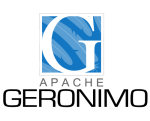Hey, wow, it is my Marc Goldberg‘s day :-) Marc actually published three must-read articles about all the economic shifts in the Software industry. Really worth a read for the three (although one of them is in French…). So, a very long post ;-)
First “via Marc“
Marc found out a very interesting article from Rick Sherlund, Goldman Sachs, about the new Software industry economic trends. Very interesting!
The macroeconomic influence on tech is greater than ever as tech has grown to become the single largest component of corporate capital spending – now almost 40% of the total.
IT spending was able to well outpace economic growth as it grew as a proportion of GDP from 1.5% in 1970 to almost 5% in 2000. Since settling in at less than 4% in recent years, tech is likely to resume growing as a percentage of the economy, but not nearly at the rate of decades past.
Not surprisingly then, the correlation of IT with the broader economy has jumped from less than 0.1 in the 1970s to over 0.9 in recent years as the industry has matured.
While tech continues to benefit from “mini-waves” of technology shifts (e.g.,
wireless), there are not the rapid, landscape-changing shifts that drove feverish growth in the 90s. In addition, many of today’s technology trends actually serve to reduce aggregate IT spending. […]
- Of all tech trends, wireless’s impact will be broadest
- China and India are altering both supply and demand formulae
- The low-end unit epidemic is distorting revenue realities
- With drivers escalating, security is at an earlier stage than the consensus view
- Even at this stage, spending is still consolidating around fewer, larger vendors
- Internet treasure chest now being unlocked
- Open source opening Pandora’s box on pricing throughout the IT stack
- The true digital home will be longer in coming than expected
- SOAs shake up the software industry
Second “via Marc“
By the way, Marc has also published for some days a superbe analysis about the new Software industry economics and valuation. Just for French-speaking readers….
10 years of Internet, certainly 10 years of technology change and new businesses models, but more than that 10 years for a paradigm shift on how corporate assets are identified, valued, and monetized: 10 years during which the importance of intangible assets, their mode of valorization by the markets and their mode of appropriation by the entrepreneurs and owners of these companies became our true obsession….
Third “via Marc“
Last but not least…. The third one is based on a post from Bill Burnham on how the software industry has been shrinking in 2005 (providing low public market returns, but interesting M&A; exits for innovative software SME’s).
Despite this explosion of new software, the software industry itself is shrinking. In 2005, the aggregate market capitalization of the software sector shank by almost 10% despite the broader NASDAQ market being up 1.4%. Even if one adjusts that number to account for privatizations, M&A; and IPOs, the software market still shrank by 9%. This shrinkage is also apparent when looks at the raw number of public software companies. There were 236 public software companies at the start of 2005, but only 213 at the end of the year, a decline of 10%. Put another way, for every new software company that went public in 2005, almost 7 were acquired or went out of business. Not exactly an encouraging picture.
What then is responsible for the software sector’s precipitous market cap decline? Like most complex systems, there is no one single factor driving this trend, but a combination of factors including:
- Software is moving from “growth” to “value”. value managers simply aren’t willing to pay 35X next year’s EPS for anything, which is leading to major multiple contractions in many of the top names in the industry.
- Open Source and SaaS. The modern software market was built on the backs of large one-time perpetual license sales. Unfortunately two major trends are conspiring to make it increasingly difficult to grow revenues quickly: Open Source and SaaS. Open Source basically flips the revenue model: it gives away the source code up-front and tries to make money on the back-end by charging for support. SaaS (Software as a Service) allows companies to purchase software “on demand” over the web. As a result, SaaS requires little or no up front investment from a customer and is often purchased on a short term subscription plan. The lack of large up-front payments makes it very difficult to grow SaaS revenues quickly and reduces margins because the company actually provides a real service as opposed to just shipping a disk. Thus, as Open Source and SaaS gain prominence it’s becoming increasingly clear to investors that the good old days of 200% revenue growth/year at 95%+ gross margins are gone for good and stock multiples are responding by heading south.
- No big platform transition.
- Networking companies are encroaching on software company turf. If you pry open the hood of your average router, you won’t find a disk drive or a keyboard but you will find a ton of software sitting inside flash memory or embedded in chips. In fact, many network company executives will insist to anyone that listens that their company is more of a software company than it is a hardware company.
- Being public ain’t so great. Being public in these post Sarbanes-Oxley days is not easy, especially if you were a software company that lavished options on its employees and played it a little loose with revenue recognition from time to time.
I can’t agree more… Specially concerning the point 4). For the point 5), I am convinced that there is no new platform, BUT new layers are appearing in the whole IT stack. I will come back to that in the coming days….

 New version of
New version of 
 The
The